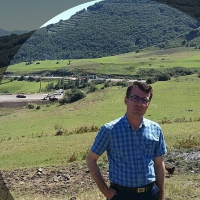Evaluating the Impact of Hydrological Index on Water Security Index (WSI) in Qarasu Watershed Sub-basins
Water security is strongly influenced by many factors including increasing urban population, economic development, changes in living standards, increasing water pollution, over-exploitation of groundwater resources, and climate change. The aim of the study is to evaluate the impact of hydrological index on water security index (WSI) in Qarasu sub-basins.
In this study, hydrological index (H), per capita water, and water discharge were used to estimate the water security index. In other words, the water security index uses normalization to assess the sustainability of the watershed.
The results of the water discharge index assessment in the Qarasu watershed showed that the highest water discharge among the 27 sub-basins studied was related to sub-basin 1 at the Namin hydrometric station with a value of 560,196,073 cubic meters and sub-basin 23 at the Nanekaran hydrometric station with a value of 305,170,988 cubic meters. The results of the per capita water assessment in the Qarasu sub-basins showed that the highest per capita water for each person was allocated to sub-basin 20 at the Nooran station with a value of 957.9733,133 liters and in the next rank, sub-basin 18 at the Baroq station with a per capita water value of 914.9249,868 liters among the sub-basins studied. Therefore, it is concluded that the higher the hydrological index in the sub-basins studied, the more suitable the basin sustainability index will be. Finally, it is suggested that executive and management measures be implemented in some sub-basins that do not have a suitable hydrological index, as the Water Security Index (WSI) is very low in them, in order to witness the development of sub-indices in all the studied basins so that the Water Security Index takes an upward trend.
-
Flood Potential Assessment in the Kuzet-Topraqi Watershed Sub-basins Using the Extended Flash Flood Model
Aghil Madadi *, Amirhesam Pasban, Behrouz Nezafat Taklhe
Journal of Sustainable Urban and Regional Development Studies, Autumn 2025 -
Geotourism and geomorphological analysis and evaluation of Sarein township based on M GAM model
Fariba Esfandyari Darabad *, Behrouz Nezafat Taklhe
Journal of Sustainable Urban and Regional Development Studies, Autumn 2025 -
Analysing the Quality Karaj City Green Spaces using Remote Sensing Ecological Index (RSEI)
Nazanin Naseri, Milad Hosseinzadeh Niri, *
Journal of Geography and Environmental Studies, Spring 2025 -
Determining the dynamics of land use changes in a long-term time span in Erzurum, Turkey
Nazila Alaei, Memet Salih Bayraktutan *,
Anthropogenic Pollution Journal, Summer and Autumn 2024



